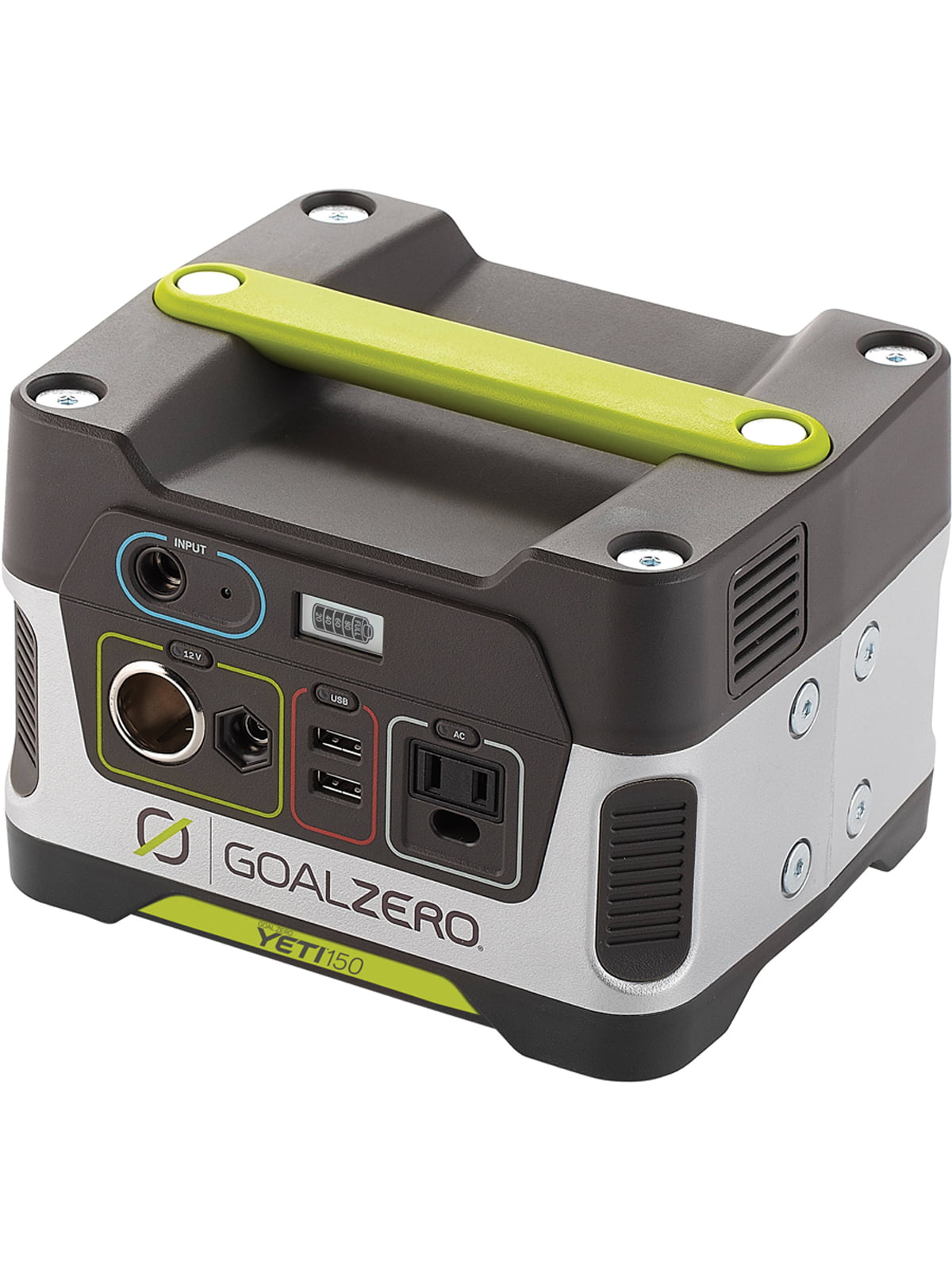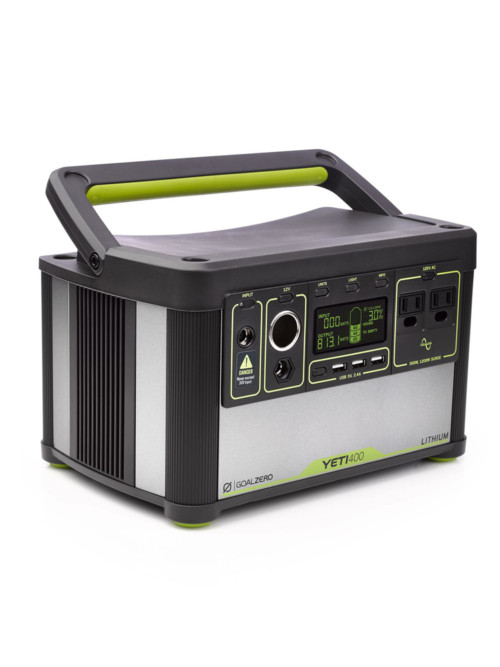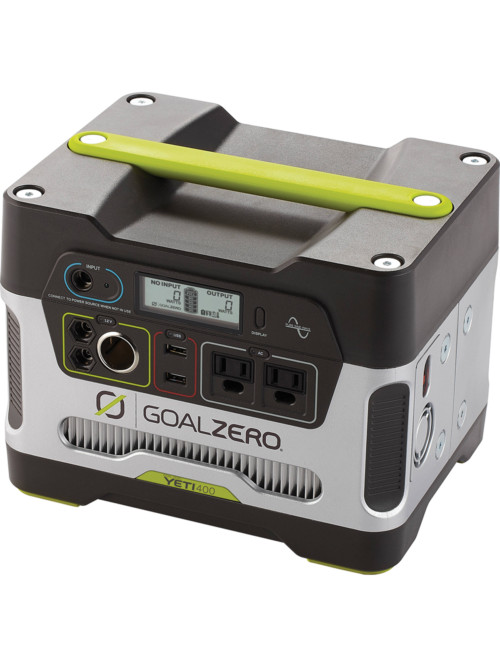Goal Zero Yeti 150
The Goal Zero Yeti 150 Solar Generator is a gas-free source of portable power to keep lights, phones and laptops powered on through any situation. A plug-and-play power source generator for camping or wherever you need power. It is completely silent and fume free.
- Recharge by AC 240 volt, 12 volt or solar panel.
- Outputs: 2 x 12 volt. 1 AC. 2 USB.
- Capacity: 150Wh, 14Ah.
- Ideal for: Tablet, Laptop, DSLR Camera or Lights.
- Charge times: Wall – 6Hrs. Car – 8Hrs. Solar – 11-44 Hrs (depending on panel size)
- Dimensions: 19.7 x 14.6 x 17.2cm.
- Weight: 5.4 kg (12 lbs)
- We check our prices against our competitors to be as competitive as possible.
- Our price promise means we will try and match or beat any written quote you have received.
FREQUENTLY ASKED QUESTIONS
|
- Q: What type of battery is in the Yeti 150?
- A: The Yeti 150 uses a 12V sealed lead-acid battery (AGM), similar to what is found in your car. Here are some basic facts about AGM batteries:*AGM batteries should be kept full at all times.*AGM batteries last longer if you do not drain them completely. This stems from the “battery memory myth” in old rechargeable batteries.
- Q: How do I know if my Yeti 150 is charged?
- A: To check the charge level of the Yeti 150, refer to the LCD Battery Display. When lit up, you’ll see a battery outline with 5 segments, indicating the current charge level. You can turn on the Battery Display by pushing one of the power buttons above each output port. It is ok to use your Yeti 150 even when it’s not fully charged.
- Q: My Yeti 150 is beeping, what does that mean?
- A: Plug your Yeti 150 into a power source, like a solar panel or outlet, as soon as possible. This chirping is to alert you that your Yeti 150’s battery is low and needs to be charged.
- Q: Can I take my Yeti 150 on a plane?
- A: You sure can. The Yeti 150 contains an advanced, sealed lead-acid battery that is completely safe to bring along on your flight. Bring along your user manual to show the type of battery inside.
- Q: Is the battery inside my Yeti 150 replaceable?
- A: Yes. Your Yeti 150 depends on an advanced lead-acid battery to power your gear, and like all other batteries, one day it will make the journey to the battery graveyard. Lucky for you, the Yeti 150’s battery is replaceable.
|
- Q: One of the green LED lights on the Output Port buttons turned red, what does that mean?
- A: You have tripped the over current protection inside the Yeti 150, which usually means your device has pulled too much power. Reset the breaker by pushing the Output Port button twice. If this continues to happen, check and make sure your device is suitable for use with the Yeti 150, then give our customer solutions center a call.
- Q: How do I know if my device will work with the Yeti 150?
- A: First, you’ll need to determine the amount of power your device requires. This may require some research on you end, a good online search or reading the user guide for your device should suffice.Second, you will need to check the capacity for the individual output ports. For example, the AC port is monitored by an inverter that allows for 80W of continuous power. This means if your device is pulling more than 80W for an extended period of time, the Yeti 150’s inverter will shut off. The Yeti 150’s 12V ports allow for 120W of power and might be a better solution if your device is pulling more power than AC inverter can handle.Once you know your device is compatible, you’ll want to determine how long you’ll be able to power your gear from the Yeti 150.
- Q: How long will the Yeti 150 run my device?
- A: All Goal Zero rechargers have a number in their name. These numbers refer to the Watt Hours (Wh), or the amount of energy that can be stored in each battery, and how you’ll know if your gear is compatible with each recharger. For example, a 200Wh battery should run a 100W light for 2 hours (200/100=2). If your gear falls within the 150Wh capacity of the Yeti 150, you’ll want to check the restrictions on each output ports.
|






